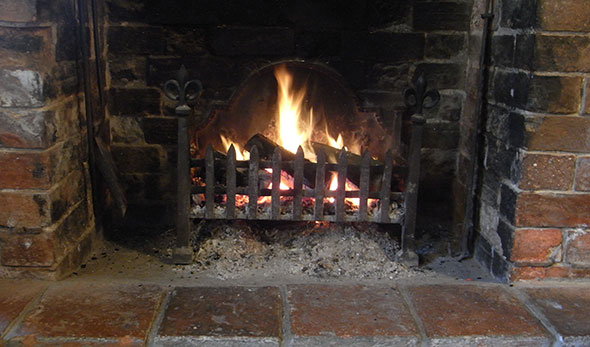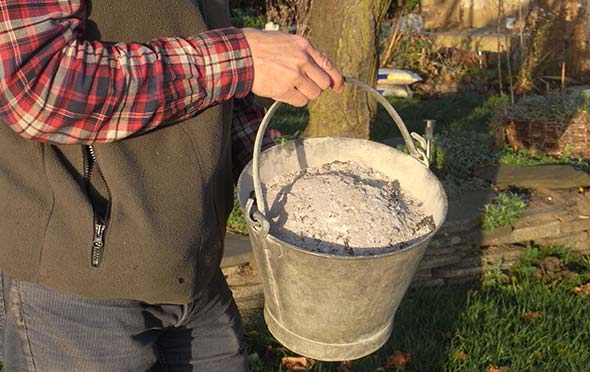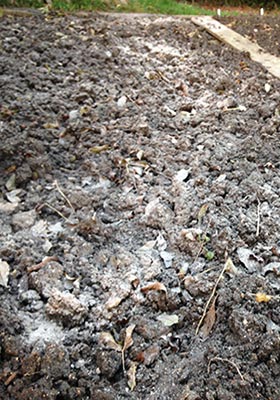During the winter months, we often use our open fire and wood burning stove to keep some ‘background heat’ in our house. Wood ash in the vegetable garden can be really useful because it contains calcium carbonate which acts as a liming agent, potassium and many trace elements. It can also be used in the compost heap providing you don’t overdo the amount you use and layer it with other compostables.

You can make good use of wood ash around the vegetable garden, although do not use ash that has come from treated timber since there will be chemicals left in the ash. Arsenic was used in creosote and some pressure treated timbers for example.
BBQ wood ash can be used but ensure you light the BBQ with paper, rather than chemical fire lighters or fluids. Ash that has come from coal cannot be used, in fact it will do harm to the soil so is best disposed of in your normal household waste bin once it’s completely cold.

We make use of our wood ash in the following ways:
On the Compost Heap
Wood ash can be a useful additive to the compost heap but only when it’s added in small quantities (a thin layer every 6 to 8″). If you overdo it, you can end up with compost that is too alkaline and will contain high levels of salts that will damage the structure of your soil.
The resulting compost you produce is slightly alkaline and useful when dug into the garden or used as a mulch to stop weeds around plants.
Applying Directly to the Soil
Wood ash is popular with organic gardeners who use it to adjust the pH value of soils, making them more alkaline. Test your soil first since most vegetables grow best with a pH value of 6.5. Asparagus can grow well with a slightly higher pH but most fruit, especially Raspberries need prefer slightly acidic soil so it’s best not to apply wood ash directly to the fruit garden. Avoid beds where potatoes are to be grown the following spring since alkaline soil can encourage potato scab.

Wood ash can be used in a similar way to a fertiliser in the vegetable garden – it allows organic gardeners to recycle nutrients back into the soil in a natural way. It is a natural source of potassium (depending on the wood you burn, contains up to 10% potash) and many trace elements such as iron, manganese, zinc, copper. The exact composition depends a lot on the wood you burn, its age, even where the trees came from and the nutrients they took up as well as the combustion temperature of your fire. It is important to remember that wood ash does not contain nitrogen, so it is more useful as an addition to the compost heap or mixed with composted chicken manure which is high in nitrogen.
Potassium deficiency in a vegetable garden can be corrected using wood ash – the general symptoms of this are usually curled leaves, yellow patches along leaf edges and the veins. Soil testing should be able to confirm this deficiency for you.
Over the winter, when most vegetable beds are bare, one of the easiest ways to dispose of excess wood ash is to scatter it over the surface of the soil and rake it in to the surface so that it can be incorporated into the soil before the spring.
To Prevent Clubroot
Whilst I haven’t done this, it is a well known fact that if you have club root in your garden, you can use wood ash to raise the pH of your soil (no more than 7.5) to stop this disease from striking.
To Prevent Slugs and Snails
Slugs and snails will not crawl across wood ash, so whilst you shouldn’t apply it to your plants directly, you can use it as a line of defence around the outer edge of vegetable beds. There will still be slugs in the soil but at least you can stop a good number of slugs and snails from coming onto your plot.
Wood ash acts as a desiccant so requires production of excessive slime for them to protect their soft underside…so they don’t like to cross it.
